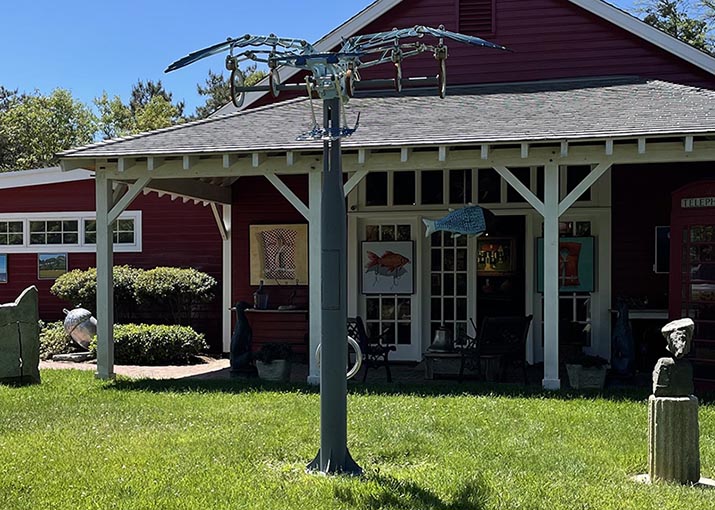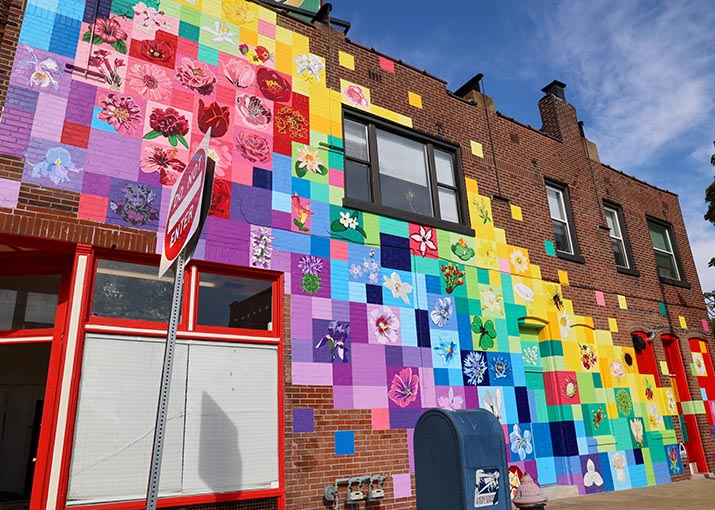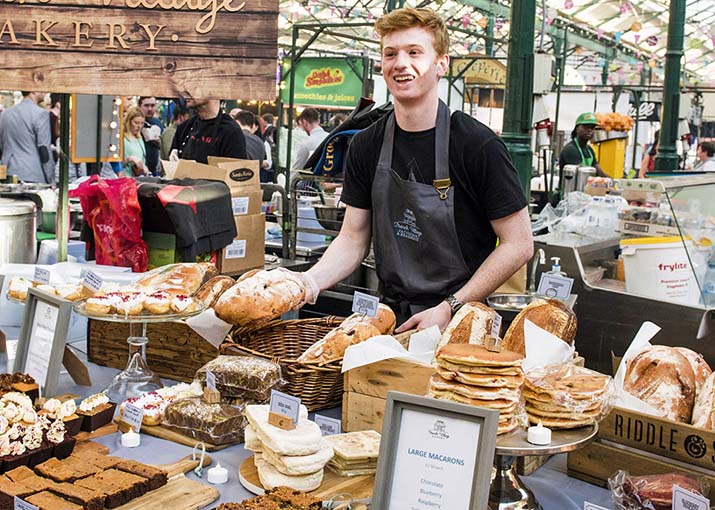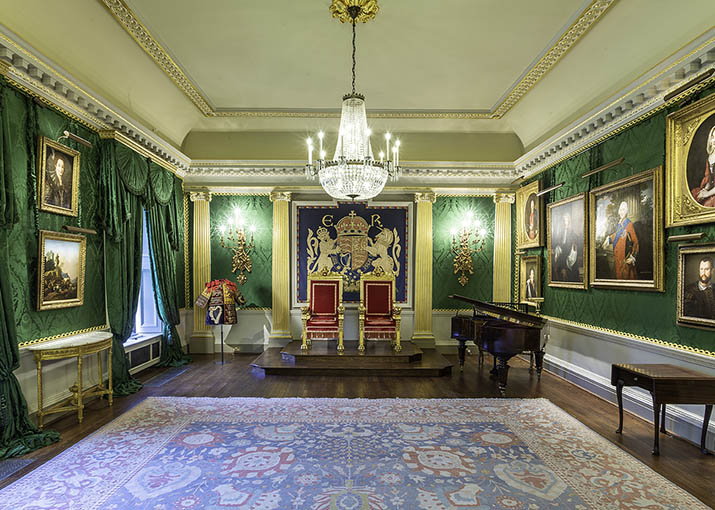When people think of Belfast, the first things that often come to mind are its ties to the Titanic, its history of religious conflict, and the iconic Peace Wall. But this capital of Northern Ireland is much more than that. Tucked away around street corners and deep in alleyways lies the city’s unique spirit—quiet yet powerful, reserved yet profound.
Today, I want to share with you another side of the city: those “off the beaten path” cultural corners that may not appear on mainstream tourist itineraries, but hold a deep and lasting fascination for anyone willing to explore.
Below are 10 carefully selected cultural spots—underrated, yet truly worth your time.
1. The Black Box – A Haven for the Creatively Inclined
Located in the Cathedral Quarter, The Black Box is an independent art space with an understated exterior but an undeniable artistic energy. There’s something happening here almost every day—live jazz, improv comedy, indie film screenings, poetry slams.
I stumbled into The Black Box on a rainy afternoon during a youth photography exhibit. The photos, mostly from amateur artists, felt raw and rule-breaking. After chatting with some of the creators, I realized that The Black Box isn’t just a venue—it’s a platform for expression, creativity, and community.
If you’re into the arts, authenticity, and a bit of bohemian spirit, spend an evening here. You might just find something that resonates deeply.
2. St George’s Market – Belfast’s Cultural Microcosm
Famous among locals but often overlooked by tourists, St George’s Market is a Victorian-era indoor market that has transformed into a hub for independent creators, chefs, and musicians.
Friday is best for vintage books and antiques; Saturday, a kaleidoscope of food and art. While browsing, you might catch a folk musician performing live, or discover fusion dishes that blend African, Mediterranean, and Irish flavors.
One memorable visit introduced me to a ceramic artist who creates Celtic-themed pottery and a young sculptor using old bicycle parts as material—every stall felt like a chapter in Belfast’s cultural anthology.
3. The Red Barn Gallery – The City’s Soul in Black and White
This hidden gem focuses on documentary photography and is tucked away in a barely noticeable alleyway. Even many locals haven’t heard of The Red Barn Gallery. The space showcases black-and-white photographs chronicling Belfast’s working-class life, history, and transitions.
Unlike commercial galleries, this one offers a deeply emotional lens into the city’s past. I once stood for what felt like ages in front of a photo of children playing soccer beside the Peace Wall in the 1970s. It was hauntingly real.
It’s a must-visit for photography lovers and anyone seeking to understand the soul of Belfast beyond its surface.

4. CS Lewis Square – Where Fantasy and History Meet
Did you know the author of The Chronicles of Narnia, CS Lewis, was born in Belfast? In the city’s East side lies a square named after him, featuring life-size sculptures of iconic characters like Aslan and the White Witch.
Beside the square, a small literary center displays handwritten manuscripts, notes, and personal letters, tracing Lewis’s journey from Belfast boyhood to fantastical worlds.
A nearby trail leads to a pond where Lewis used to walk as a child. Standing there, under the rustling trees, you almost expect Aslan himself to whisper through the wind.
5. Albion Glassworks – Forgotten Factory, Reimagined Art Space
Once a major industrial hub in the early 20th century, this abandoned glass factory is now a place of creative reinvention. Though derelict, its walls still house stained glass patterns that gleam under sunlight.
Today, local art collectives use the space to host experimental exhibitions that blend “old industry” with “new art.” I visited during a light installation show titled Glass Reborn—a haunting tribute to the city’s industrial roots told through glowing sculptures and multimedia displays.
This site is a moving homage to Belfast’s past and an exciting canvas for its creative future.
6. Linen Hall Library – A Quiet Powerhouse of Knowledge
The oldest library in Belfast isn’t in a university—it’s the Linen Hall Library, established in 1798 and nestled beside City Hall.
Specializing in Northern Irish history and politics, the library also holds the world’s most comprehensive archive on the Troubles. Visitors can browse its resources freely, making it a haven for researchers, writers, or the simply curious.
Every book here adds another layer to the story of Belfast, patiently waiting to be uncovered.
7. Cultúrlann McAdam Ó Fiaich – The Gaelic Heartbeat of West Belfast
This Irish-language cultural center in West Belfast offers an immersive experience into Gaelic heritage. Inside, you’ll find a library, a gallery, a theatre, and even a school offering language classes.
My most unforgettable moment here? A traditional concert performed entirely in Gaelic. I didn’t understand the words, but the emotion came through clearly—an echo of identity, history, and longing.
The center also sells handmade crafts and local books, providing a unique lens into Northern Ireland’s lesser-known communities.
8. The Secret Garden – A Green Sanctuary in the City
Nestled in the Ormeau area of South Belfast, The Secret Garden is a flourishing community gardening initiative maintained entirely by local residents. It began as a small allotment project but has grown into a cherished green space that welcomes anyone with a love for nature and sustainability.
Lined with native wildflowers, buzzing beehives, handmade “bug hotels,” and even an eco-education corner for children, the garden feels like a hidden oasis in the middle of urban life. Residents often gather here not just to garden, but to share knowledge, swap seeds, and host seasonal festivals that celebrate the cycles of nature.
I visited on a sunny afternoon filled with butterflies, bees, and the soft laughter of children watering plants. Colorful environmental slogans decorated the walls—statements like “Grow Your Future” and “Nature is Resistance”—while neighbors chatted over compost piles, sipping herbal tea brewed from garden-grown mint. This humble plot reminded me that culture lives not only in grand museums or cathedrals, but also in every nurtured corner where humans and nature grow together.
9. Metro Mural Project – When Transit Becomes a Gallery
Who says your morning commute has to be boring? Belfast’s innovative Metro Mural Project reimagines public transport as a canvas for creativity, transforming otherwise utilitarian bus and metro stations into living street art galleries. Commissioned by the city’s transport department, the murals are the work of local artists who use bold colors and visual storytelling to reclaim everyday urban spaces.
Each station features its own theme—some celebrate Belfast’s industrial legacy, others explore ecological change, folklore, or even science fiction. The result is a public gallery that evolves with the city, reflecting its identity through layers of paint.
One of the most compelling stops is Great Victoria Street Station, where a stunning mural depicts a train traveling through time—emerging from the soot and steel of the Victorian era and racing into a neon-lit futuristic landscape. Standing there, I saw commuters pause to photograph the wall, their expressions momentarily softened by wonder. It’s a beautiful reminder that art can live in the most unexpected places—even while waiting for your next ride.

10. The Dock Café – A Café Run on Faith and Kindness
Tucked beside the glimmering waters of the Titanic Quarter, The Dock Café is unlike any other coffee shop I’ve visited. There’s no cash register, no fixed prices, and no menu. You simply pour yourself a drink, choose a snack from the counter, and drop a donation in the honesty box—whatever you feel moved to give.
Run by a local chaplain and a team of volunteers, the café operates on principles of trust, kindness, and inclusivity. It’s not just a café—it’s a sanctuary, a conversation hub, and a community in itself. People from all walks of life come here: students, tourists, artists, people of different faiths, or no faith at all.
The inside feels like stepping into someone’s living room—warm lighting, second-hand furniture, shelves of books, and handmade crafts lining the walls. A corner features notebooks where visitors leave messages, poetry, or simply thoughts from their travels. I once spent an hour here just talking to a retired shipbuilder who shared stories of the Titanic era over tea and shortbread. In a city shaped by both division and healing, The Dock Café is a quiet act of grace, reminding us that generosity is its own kind of architecture.
The Gentle Glow of the Unseen
Travel is not just about sightseeing—it’s a cultural dialogue. These lesser-known spots in Belfast speak in whispers rather than shouts, offering insights that don’t come with an entrance fee or a guided tour.
If you’re willing to slow down and explore the alleys, ruins, and repurposed art spaces, you’ll uncover a richer, more intimate side of Belfast.
Next time you visit, skip the Peace Wall and the main museums—just for a while—and start a private conversation with the city’s quiet soul.


